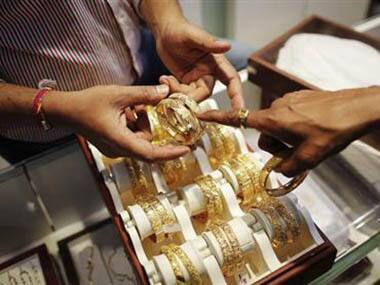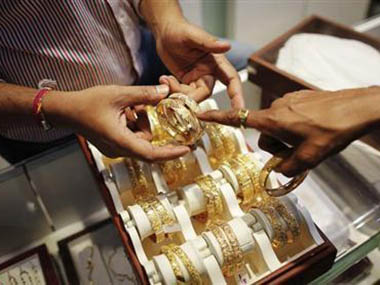A day after the government gleefully announced a 1.2 percent (of GDP) current account deficit data, here is a news that tells the behind-the-scene story of this surprisingly sharp fall.
Hawala premiums for smuggling gold have doubled to 2.5-2.8 percent, says a report in the Business Standard. It also says the unofficial imports are likely to be at least 50 percent more than 100 tonnes in 2012.
Juxtapose this with the official data on gold imports and the story is revealed for you. As per the government data, theimports were 7.24 tonnes in September and 23.5 tonnes in October as against an average 80 tonnes a month until July. In short, there is nothing much to be happy about the falling gold imports, because there is an increase in smuggling.
In its fight against the widening current account deficit that crippled the rupee, the government has imposed unprecedented curbs on gold imports. Customs duty on the yellow metal have been increased tenfold - from 1% at the start of 2012 to 10% today. Excise duty now stands at 9% while new rules such as strictly cash-only for imports, transaction taxes and even bans on gold-backed exchange traded fund investments have stymied India’s gold industry.
India is the largest consumer of gold worldwide.
Prima facie, the efforts have paid off when you compare the July-September print of CAD with the record high of 4.8% hit in 2012-13.
The World Gold Council, RBI governor Raghuram Rajan and finance minister P chidambaram have admitted a spur in gold smuggling into India after the government imposed curbs on the yellow metal.
According to World Gold Council, gold is entering the country unofficially through India’s porous borders helped to meet pent-up demand, together with an influx of recycled gold that was drawn out by higher prices and promotions offered by retailers during the third quarter to end-September.
“Reports that a good market for 10-tola (100 grams) bars is re-emerging, due to the relative ease with which they can be concealed, reinforce this view,” the WGC said in a report last month.
The WGC report also noted thatThailand is being used as a route to channel gold into other markets, notably India and Vietnam.
According to a Times of India report, smugglers are skipping the traditional airport route and tapping into fake currency networks across the Indo-Bangladesh and Indo-Nepal border to push in the yellow metal.
[caption id=“attachment_1228505” align=“alignleft” width=“380”]  Reuters[/caption]
“Investigations and seizures by financial intelligence agencies in the recent past have revealed that smugglers are now flying consignments of gold to Bangladesh and Nepal and then using couriers to carry them across the border,” the report said.
Gold is usuallyboughtin places like Dubai and Thailand and flown to Dhaka or Kathmandu where authorities are not as vigilant and the spurt in smuggling activities is a result of the widening difference in the yellow metal’s price between the domestic market and such markets. For insatance, the price gap has gone up to Rs 5 lakh a kg in the past few months from being Rs 2.5 lakh a kg in June, and only Rs 1 lakh before that.
And this is where hawala comes in. The hawala market only trades in currencysmugglingand isused only for financing illegal deals in the country or outside it.
It’s an alternative or parallel remittance system, which works outside the circle of banks and financial systems established by countries worldwide. Hawala works by transferring money without actually moving it. In a hawala transaction , no physical movement of cash is there. Hawala system works with a network of operators called Hawaldars or Hawala Dealers.
Typically, hawala agents are those who transfer foreign currency illegally, paying higher exchange rates than the official figures.They collect dollars, riyals, dirhams, etc from clients and deliver rupees, at pre-determined exchange rates, at the doorstep of addressees in India.
As the BS story says, “The current size of the hawala market would easily be $20-25 billion. Over-invoicing of imports and under-invoicing of exports are the most usual practices for financing demand for hawala and the good times for the market is likely to continue till general elections.”
A rising hawala premium suggests that there is demand for this type of transport.
The figures also mean that most of the finance minister’s arguments in support of the gold curbs are falling flat.
At recent press conference,he had downplayed the spike in gold smuggling. “Last year we had imported 835 tonnes of gold. This year so far we have imported about 400 tonnes. We may import 100 tonnes more this year. So in total, the imports will be 500 tonnes. Can anybody import 300 tonnes of gold?” he asked.
He also said the maximum gold that can be smuggled is 1 tonne a month, which means only 5 tonnes can be brought in through this route this year.


)
)
)
)
)
)
)
)
)



